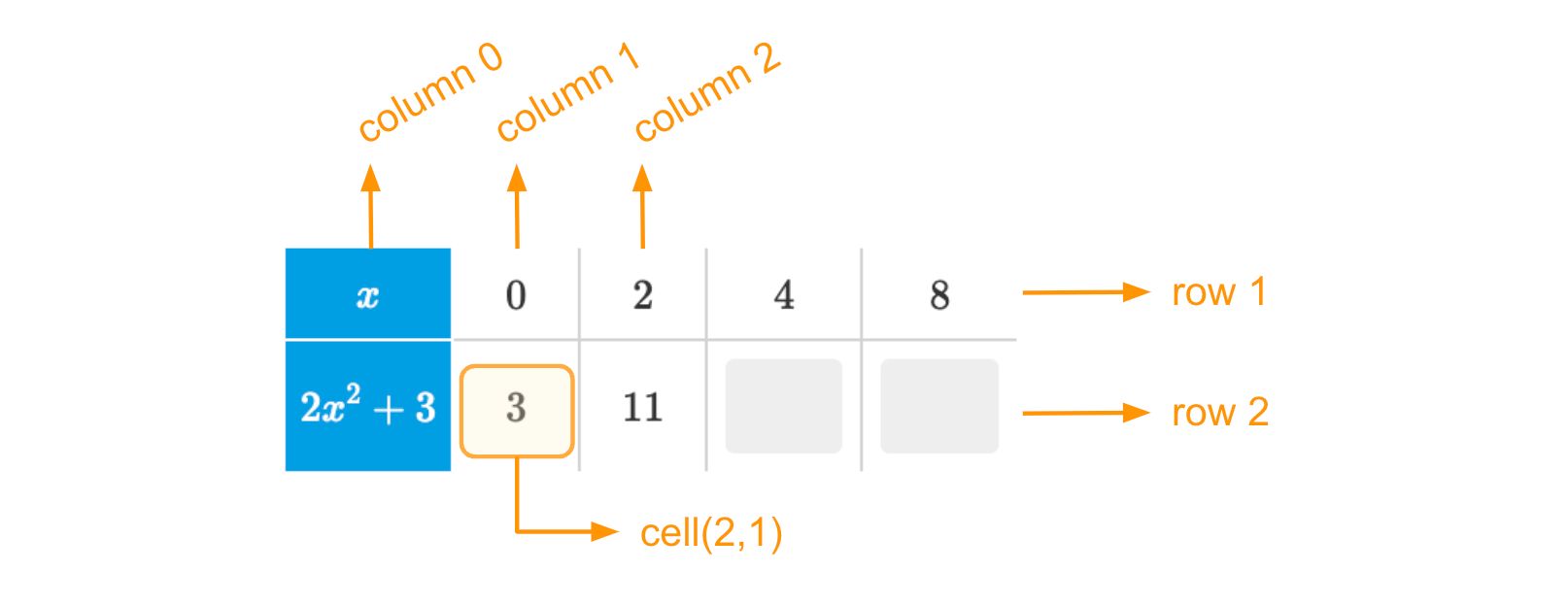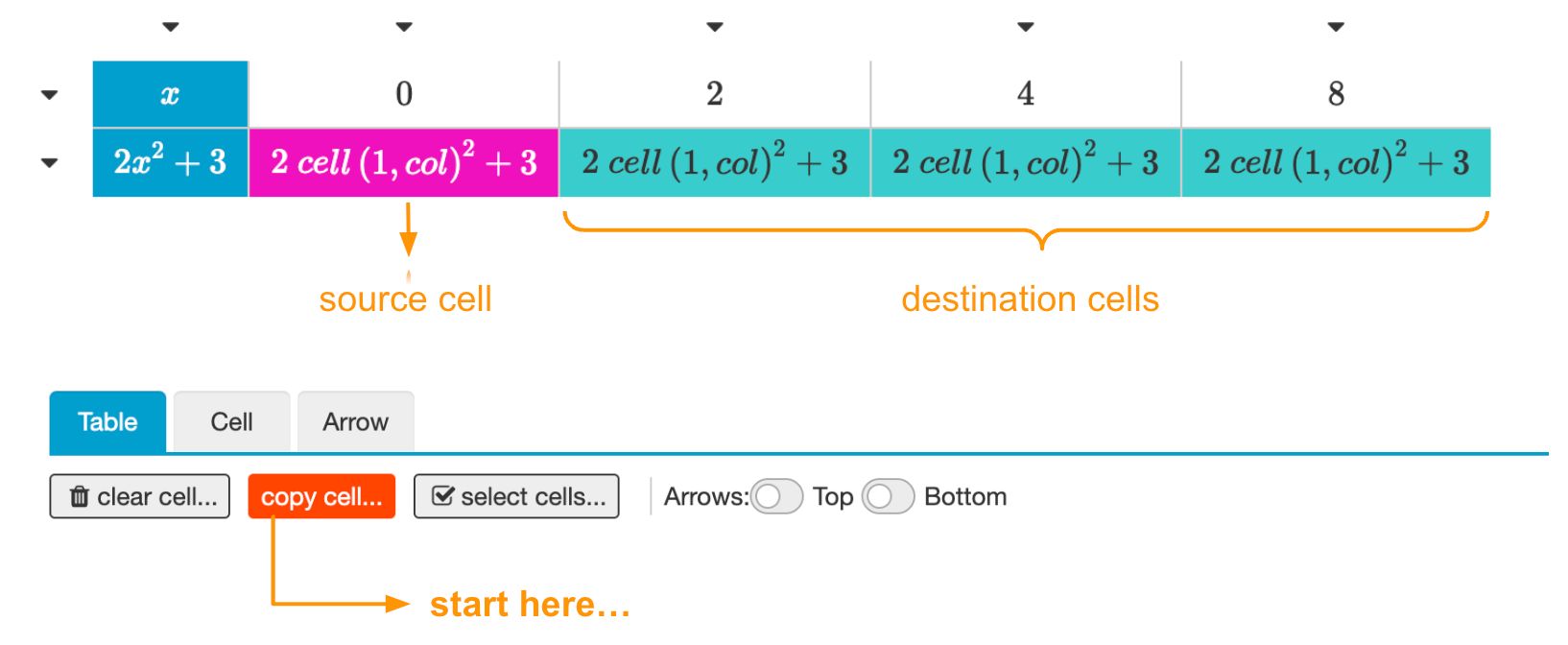Relations between cells
It is common for cells in a table to be related to each other. You can use these relations to define math cells and input cells. This allows you to create the table more efficiently and will enable Algebrakit to generate better hints.

Here is a live example of this table. We will use it as an example to explain relations between cells.
Referencing cells

Each cell in a table has coordinates in the form , where is the row number, and is the column number. Row number one is the first non-header row. Column one is the first non-header column. Header cells have row or column numbers zero or lower.
Defining relations
In our function table, each bottom cell depends on the cell above it through the same mathematical relation. You can use the this definition in each cell, as shown in the figure below. The variables and represent the row and column number of the current cell.

Note that the first two cells in the bottom row are Math cells, and the following are Input cells. Regardless of the type, they all adhere to the same relation.
Algebrakit default shows the expressions , etc., without evaluating them. To show the results of these expressions, click on a Math cell and check the 'Simplify expression' checkbox below the table.

Use case: Tables with free input
Relations add more flexibility to table questions. For example, you can allow students to decide what values to use.
In this example, the input cells in the top row use evaluation criteria with boolean conditions that allow any integer input. Thanks to the cell references in the bottom cells, Algebrakit can check that the values in those cells are valid.
Copying cells
If you use relations to define your cells, you will notice that many cells share the same definition. Configuring just one cell and copying it to the others is a convenient and efficient way to set up the table.

